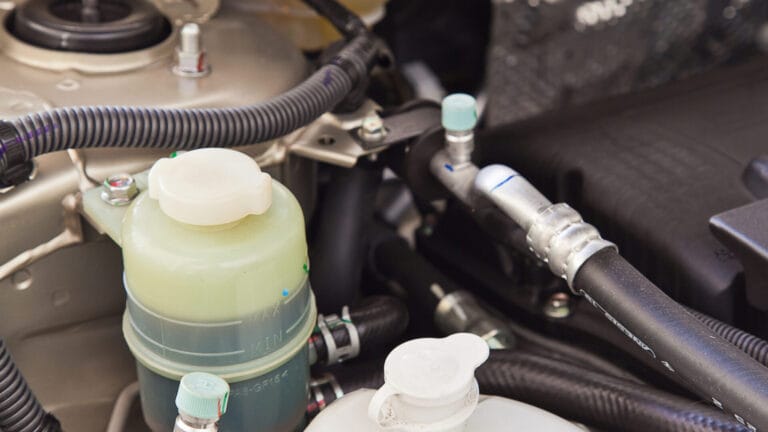Brake Pads Worn Out in 3 Months: 7 Causes and Solution?
Brake pads typically last between 25,000 and 35,000 miles in urban use. However, if driving on highways and other less demanding conditions, they could go up to 70,000 miles. This is equivalent to about 5 years or more.
So, what are the causes of brake pads worn out in 3 months? This unwanted issue can happen due to bad or rough rotors. In addition, your driving conditions or habits can contribute to the issue. Other causes include bad calipers or stuck slide pins, driving frequency, types of pads, and load weight.
But wait, there’s more! So, read on to find out the various solutions to each of the causes.
Brake Pads Worn Out In 3 Months: Causes and Solutions
Your brake pads could wear out in 3 months or less for various reasons. Read on to find out the typical causes.

- Bad or Rough Rotors
If the rotor surface is rough, it will not provide an even contact area for the new brake pads. Instead, the pads will make contact with the deep grooves on the rotor. This can lead to more heat generation, where the pads come into contact with the rotor’s rough edges.
Over time, the pad material can wear out in as short as three months due to the excess heat and abrasive action. Your car’s braking efficiency will also be impacted.
Here is what a bad rotor with deep grooves looks like:

Solution
Whenever you replace the pads, you should always have the rotors resurfaced or machined using a lathe machine. However, rotor resurfacing is only recommended if they have enough material on them with no rusting, cracks, or severe grooving.
Machining the rotors means taking the glaze off of them so there is a fresh surface for the new pads to ride on. But if the rotors are worn too thin, the best solution is to replace them while replacing the pads.
- Driving Conditions
Generally, if you regularly drive in wet or muddy conditions, your organic brake pads can wear out in just 3 months. This is because the pads will pick up abrasive materials like clay, small rocks, and sand.
If these particles get trapped between the pad and the rotor, there will be increased friction. As a result, the increased friction will cause the pads to wear rapidly.
On the other hand, wet conditions can wash away the brake lubricant on the pads, leading to reduced lubrication. Consequently, you will experience metal-to-metal contact, causing faster pads to wear.
Solution
After driving your car in muddy conditions, clean it, including the rotors. This will help remove any debris stuck between the discs.
Additionally, you should consider using semi-metallic pads instead of other organic pads. This is because they perform better in pretty much any weather condition.
- Driving Habits
One of the habits that can cause your brake pads to wear out in 3 months is regularly driving at high speeds. Typically, when you cruise at fast speeds, more friction will be generated while braking. This will cause more strain on the pads and rapid wear.
Another driving habit is tailgating. When you drive too close to other cars, you are likely to slam on the brakes more often and suddenly. This sudden braking will cause the pads to wear out prematurely.
Additionally, frequent and sudden braking, regular harsh acceleration, and hard cornering can wear down the pads in months. These rough driving habits cause the pads to wear out due to increased friction and heat. This happens when the pads make contact with the rotors.
Lastly, resting your left foot on the brake pedal while driving is another reason that causes rapid brake pad wear. This is because the foot keeps the brakes applied lightly, causing them to build up heat.
Solution
The solution is to anticipate stops, especially when driving at high speeds to avoid hard and sudden braking. Alternatively, you can adopt engine braking by releasing the accelerator pedal early. This allows you to slow down without applying the brakes.
In addition, you should always keep enough distance between you and the car in front. Lastly, only put your foot on the pedal when you intend to brake and avoid hard cornering.
- Bad Calipers or Stuck Slide Pins
Brake calipers are prone to sticking due to corrosion, worn-out seals, dirt, and debris buildup. When this happens, the caliper will continually apply friction between the brake pads and rotors. Consequently, the pads can wear down in as short as 3 months.
Similarly, stuck or seized slide pins on the caliper bolts can also cause the pads to wear out in 3 months or less. These pins are designed to keep the pads properly aligned for efficient braking.
When the pins are stuck, the brake pads will only be pushed onto the disc from the piston side. As a result, you will notice your pads wearing out faster on the inside due to excessive friction.
Solution
If the calipers or slide pins are stuck, you only need to clean and lubricate them. This should be done when replacing the pads.
However, if the calipers are badly corroded or worn out, you should replace them. Below is a video of how to replace the calipers step-by-step:
- Carrying Heavy Loads
If you often tow heavy loads, your pads can wear out in 3 months. It does not matter what brake pad types you are using. This is because your brakes must work harder to stop the car due to the excess weight.
As a result, more heat will be generated between the pads and rotors, accelerating the wear of your pads.
Solution
If your car is not equipped for carrying heavy loads, avoid it at all costs. But if it is, use the right hitch. You can also upgrade your vehicle’s braking system, including the calipers and brake rotors.
How To Tell If The Brake Pads Are Worn Out?
One of the best ways to tell if your brake pads are worn out is through a visual inspection. Simply get down on the ground and check through the wheel spokes. If the pads look exceedingly thin, they are worn out.

Alternatively, you can remove the wheel to get a better look at the pads. Then, check if the wear indicator slot is visible. If it is not, the pads are worn down. Other signs of worn-out brake pads include:
- Sharp squealing sound when making a stop
- Grinding noises when driving and braking
- The vehicle’s nose pulls to one side when braking
- Extended stopping distances
- The brake pedal vibrates or shakes violently when you step on it
FAQs
In this section, we will respond to commonly asked queries regarding brake pads wearing out in 3 months.
Do front brake pads wear out faster than the rear?
Yes, in most vehicles. This is because the fronts handle more weight. But if you use your car to tow heavy loads at the back regularly, the rear pads will wear out faster.
Should you replace all the brake pads at once when worn?
Typically, you must replace all the 4 brakes’ brake pads simultaneously. It does not matter whether the rear pads still have some material left on them. However, there is no big harm in replacing the front and hindmost pair separately.
What happens if I drive my car with worn-out brake pads?
If the pads are excessively worn, driving with them can cause damage to the brake rotors and calipers. This is because the pad’s exposed metal will be grinding against the rotors whenever you hit the brakes. So, you will end up with more expensive repairs.
Conclusion
Brake pads wearing out in 3 months can be a cause for concern, considering they are designed to generally last over two years. Besides, a set of high-quality ceramic or semi-metallic pads can be expensive to replace every three months.
That said, there are many causes of brake pads wearing out very fast. These can range from bad driving habits to bad rotors and driving conditions. Regardless of the cause, in most cases, the signs of worn-out brake pads are usually similar.






